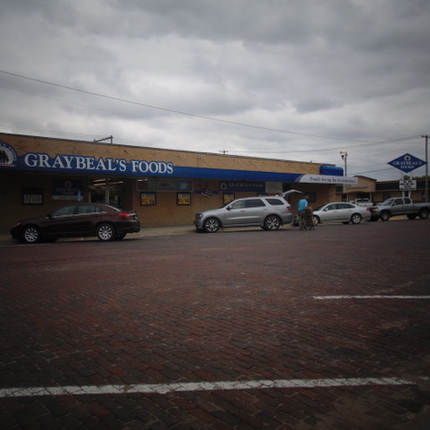Sandra Renner contributed to this blog.
Before the days of quarantine and self-isolation, many people left their small communities to purchase their groceries. Consumers may not have known what their rural grocery offers, and may not have been getting as much bang for their buck. Instead, they were considering convenience, product availability, competitive pricing, or additional services.
Sandra Renner, farm and community director with the Center for Rural Affairs, talks about what rural grocery stores are now facing, due to COVID-19.
“Rural grocers, like many rural small businesses, always seem to be on the verge,” she said. “Many consumers don’t realize their local grocers offer so many personalized services. Like many small businesses, the purchasing department, the marketing person, the meat department, the cashier, and the owner may all be the same person. Small business owners often wear so many hats.”
During the onslaught of new restrictions and regulations, people started panic buying, resulting in many stores often being unable to keep products on their shelves. Rural grocery stores, however, have stepped up to provide for their customers.
“They asked for more frequent deliveries, often sharing on social media that they were stocked up and limiting purchases of those high in-demand items, sharing photos of full shelves, meats, toilet paper, and other items,” Sandra said. “Rural grocery stores were also sharing widely about their sanitation practices. It’s constant.”
These store owners are our friends and family members, whose small businesses and livelihoods could be hurting due to this pandemic.
“They are faces you see and recognize,” Sandra said. “You know the hands your food is passing through, the care they take with it, and their earnest attempts at making it as convenient as possible with free deliveries, curbside services, and additional precautions that are visible inside the store, such as plastic shields around the cashiers.”
Rural grocery stores, like Graybeal’s Foods in Sandra’s hometown of West Point, Nebraska, has dealt with some of these challenges firsthand.
“We have seen more traffic, for sure,” said Mike Graybeal, owner. “It's almost like when we prep for a holiday, except the holiday is never coming.”
Mike mentioned that, in general, local grocery stores are stocked better than larger grocers—there’s less pressure on the big box grocers to stay stocked because people just leave to go to another store.
For rural grocery stores, it’s different.
“It’s a matter of getting supplies from Point A to Point B quick enough, especially when people are hoarding items,” said Mike. “You just never know what you’re getting until that truck unloads. We’ve had quite a few allocations where we might order eight cases and only get one case.”
Despite these hurdles, rural grocers, like Mike, continue to show up every day for their customers to provide us with the essentials we depend on. Resiliency in a time of crisis has become a way of life, and these business owners take on whatever roles necessary to get the job done, including potentially putting themselves in harm's way.
While we have all done our best to stay healthy and safe during the coronavirus pandemic, rural communities have risen above the challenges forced upon them during this unprecedented time and shown what true fortitude and grit look like—coming together to make sure neighbors, friends, and family are safe, well-fed, and cared for.
“Rural grocers have been able to serve their communities in a way that their big box counterparts cannot,” said Sandra. “Right now, it is making me want to be very intentional about putting my money in my local grocers' hands as much as possible, and continue to be mindful of this in the future.”




